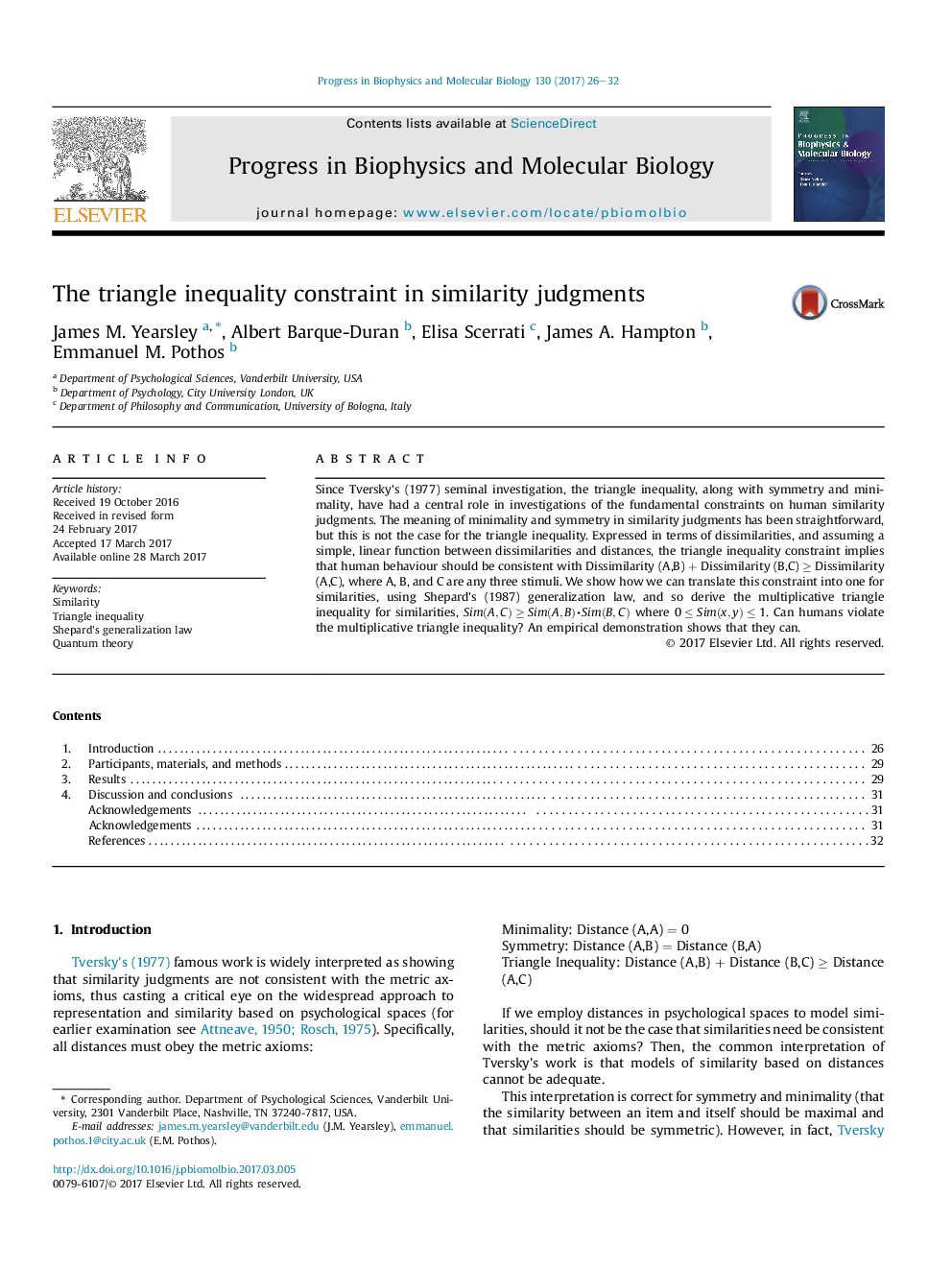| کد مقاله | کد نشریه | سال انتشار | مقاله انگلیسی | نسخه تمام متن |
|---|---|---|---|---|
| 5519803 | 1544469 | 2017 | 7 صفحه PDF | دانلود رایگان |
Since Tversky's (1977) seminal investigation, the triangle inequality, along with symmetry and minimality, have had a central role in investigations of the fundamental constraints on human similarity judgments. The meaning of minimality and symmetry in similarity judgments has been straightforward, but this is not the case for the triangle inequality. Expressed in terms of dissimilarities, and assuming a simple, linear function between dissimilarities and distances, the triangle inequality constraint implies that human behaviour should be consistent with Dissimilarity (A,B) + Dissimilarity (B,C) â¥Â Dissimilarity (A,C), where A, B, and C are any three stimuli. We show how we can translate this constraint into one for similarities, using Shepard's (1987) generalization law, and so derive the multiplicative triangle inequality for similarities, Sim(A,C)â¥Sim(A,B)â Sim(B,C) where 0â¤Sim(x,y)â¤1. Can humans violate the multiplicative triangle inequality? An empirical demonstration shows that they can.
Journal: Progress in Biophysics and Molecular Biology - Volume 130, Part A, November 2017, Pages 26-32
